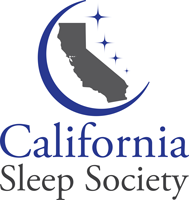By: Jennifer Elias, MPH, RPSGT
The California Sleep Society (CSS) was established in 2007 and incorporated in 2008. The initial goals were to be the voice of sleep technologists and specialists, to communicate to the California Assembly and Senate, and to lobby on their behalf. The organization focuses on education for sleep professionals and public awareness of the field of sleep.
Background and Importance of Licensure
Polysomnographic technologists are specialized healthcare professionals trained to conduct sleep studies, which are used in diagnosing and treating sleep disorders. Despite their essential role, polysomnographic technologists operated without formal licensure in California for many years. This lack of regulation raised concerns about the quality of care, patient safety, and professional accountability. Members of the society recognized these challenges and took the initiative and lead in advocating for licensure to enhance the credibility of the profession, improve patient outcomes, and to safeguard that only qualified individuals could practice as sleep technologists.
The Advocacy Journey
The California Sleep Society advocates for policies and regulations that support the interests of sleep professionals and improve patient care. The journey toward licensure was long and complex. The Board of Directors recognized that licensure was crucial for the advancement of the profession and patient care, and quickly became the leading voice in sleep medicine in California. The momentum began to build when sleep professionals from various disciplines, including sleep technologists, physicians, and researchers initiated working together towards the same goal.
The CSS began by building a coalition of stakeholders, including the American Academy of Sleep Medicine (AASM), American Association of Sleep Technologists (AAST), sleep physicians, and patient advocacy groups. This new partnership worked to educate policymakers, the public, and healthcare providers about the importance of sleep technologists and the need for licensure. They highlighted the importance of licensure would standardize training and qualifications, and in doing so it would ensure that all sleep technologists met a minimum standard of competency.
Legislative Efforts
One of the most significant challenges the CSS faced was navigating the legislative process. Members of the society worked closely with state legislators to draft and introduce bills that would establish licensure requirements for polysomnographic technologists. Over several legislative sessions, the CSS and its allies testified before committees, lobbied lawmakers, and prepared mass support from sleep technologists and their employers across the state.
Success and Implementation
The tireless advocacy of the California Sleep Society and its partners paid off . The bill passed the Assembly on September 8, 2009, and passed the Senate on October 14, 2009. Senate Bill 132 (SB 132) was signed into law on October 23, 2009, by California Governor Schwarzenegger. The new law required all practicing polysomnographic technologists in California to obtain a license from the Medical Board, ensuring that only those with the proper training, education, and certification could practice. CSS’s success in securing licensure is a testament to the power of collaboration and the importance of professional regulation in healthcare.
California Sleep Society Today
The California Sleep Society continues to be advocates for the field of sleep medicine and is currently advocating for the end of daylight-saving time (DST). By advocating for the end of DST, CSS aims to reduce the negative effects that time change has on sleep and overall health.
